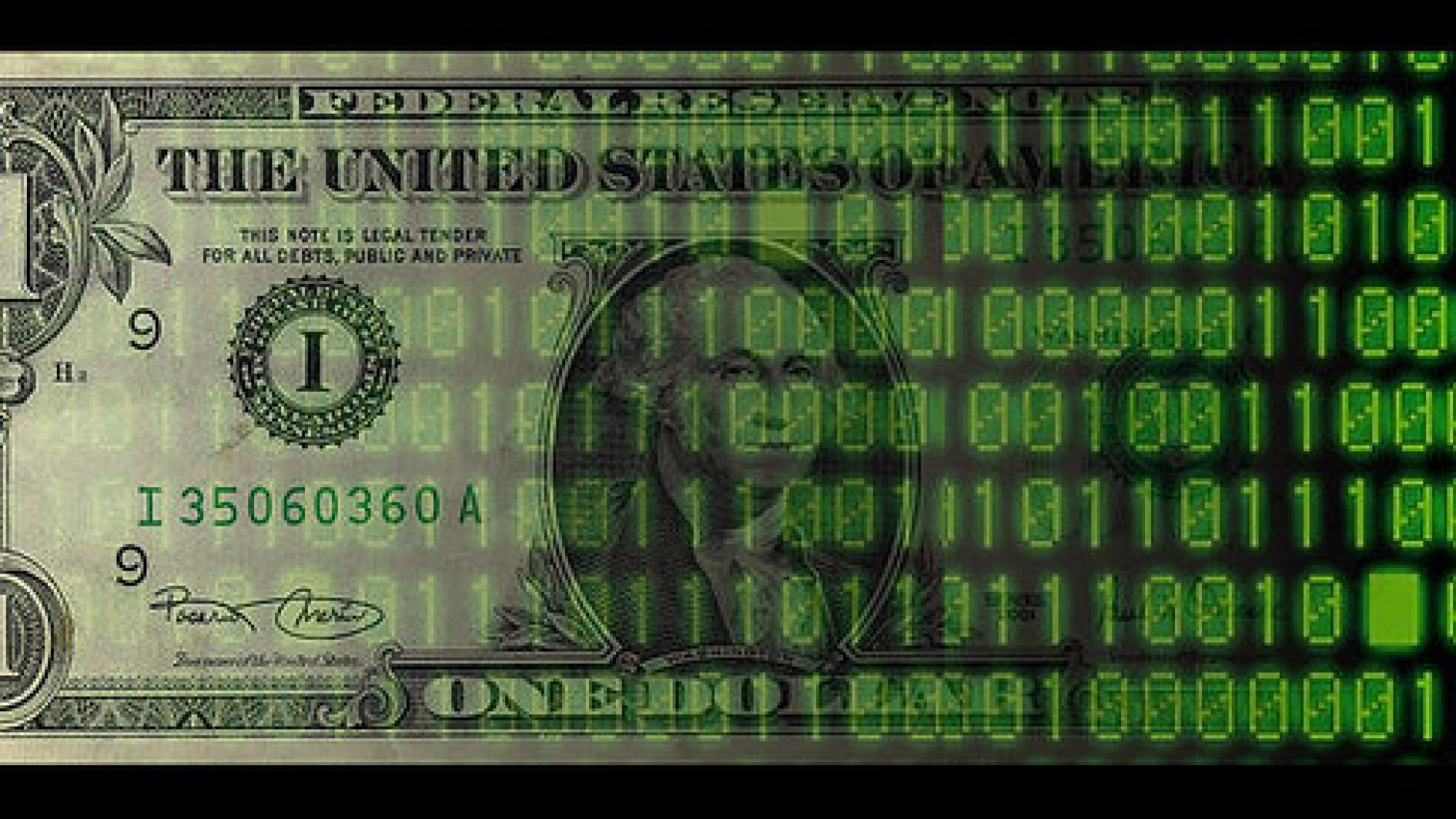
Title: Addressing Crypto: The Need for Regulation and the Potential for Central Bank Digital Currencies
The staggering rise of cryptocurrencies poses several challenges for governments and central banks. Some countries are moving to implement their own digital cash in response to this phenomenon. China’s introduction of a digital currency has sparked fears that it could undermine the role of the dollar and has prompted a debate over whether the United States should respond in kind.
Cryptocurrencies are a form of digital money exchanged via distributed ledgers known as blockchains. Transactions between digital wallets are typically recorded publicly and verified by the network using cryptographic algorithms to prevent tampering. This eliminates the need for an intermediary such as a bank or credit card company to validate transactions and enables quick payments, even across borders, at a lower cost.
The explosive growth of Bitcoin and other cryptocurrencies (at the time of writing, total market capitalization is about $2 trillion) poses several problems for governments. Among these is their usefulness in facilitating illegal transactions. While the transactions between digital wallets are recorded on a public ledger, the wallet owners can remain anonymous—enabling criminal groups to solicit ransom payments and blacklisted states to evade sanctions, for example. The widespread use of unregulated cryptocurrencies could undermine financial stability. Policymakers should respond with prudent regulation.
Despite its popularity as a speculative asset and inflation hedge, Bitcoin has so far failed to gain widespread adoption as a payment method due to its volatility and relatively high transaction fees. In addition, the Bitcoin blockchain is unable to quickly process large transaction volumes, though technologies are being developed to address this “scalability problem”. Treasury Secretary Janet Yellen has called Bitcoin an “extremely inefficient” payment method.
Instead, the primary competitors to fiat currencies are stablecoins—types of cryptocurrencies that are backed by other assets, such as U.S. dollars, which allows them to be converted into national currencies at a guaranteed exchange rate. The technology is promising: it offers speed and cost benefits without the volatility of Bitcoin and could help bring unbanked people into the financial system. The value of stablecoins in circulation has rapidly increased over the past two years to more than $100 billion. They are widely used to facilitate decentralized finance, or DeFi: the growing number of blockchain-based apps that provide crypto financial services such as borrowing, lending, and trading.
The rise of stablecoins has caused regulators to worry. Some argue that stablecoin issuers are essentially acting as banks—taking deposits from consumers with the promise to redeem them at par—without being subject to the same strict regulations or covered by federal deposit insurance. For example, the Yale School of Management’s Gary B. Gorton and the Federal Reserve’s Jeffery Zhang have written that the rise of stablecoins resembles the “Free Banking Era” of the 19th century when private U.S. banks were able to issue their own currencies. This period was characterized by frequent panics and bank runs when consumers lost confidence in the banks issuing notes. The same concern exists with stablecoins. Though some issuers disclose the assets they hold to back their coins, they are not subject to formal reserve requirements. New York’s Attorney General has alleged that Tether, a major stablecoin issuer, lied in claiming that its coin was backed one-to-one by dollars at all times. Crypto-runs could occur if consumers fear that they will not be able to convert their stablecoins back into national currency.
There are several proposed solutions. In November 2021, a Biden administration working group issued a report on stablecoins that, among other recommendations, called on Congress to enact legislation requiring stablecoins to be issued by insured depository institutions such as banks and savings associations, thus subjecting them to regulation by the Federal Reserve and reducing the risk of runs. The Financial Stability Oversight Council (FSOC) could also step in to regulate stablecoins by labelling them a systemic risk to the financial system. Another option would be for the government to issue its own digital coin, known as central bank digital currency (CBDC), to compete with or replace private stablecoins.
Facebook’s (now Meta) announcement of a stablecoin called Libra in 2019 galvanized interest in CBDC. In the initial proposal, Libra was tied to a basket of currencies, leading to concerns that it would undermine the ability of individual central banks to conduct monetary policy if the social network’s massive reach led citizens to transact in it. To allay this concern, Facebook said the project, since renamed Diem, would include single-currency stablecoins as well. The introduction of a digital currency by the tech giant has attracted attention from European antitrust regulators as well since Facebook’s established user network would give it a huge advantage over competitors.
Today, nearly 90 countries representing more than 90 percent of the global economy are considering CBDC. China has moved aggressively to implement a digital renminbi, and concurrently cracked down on the use of cryptocurrencies, prompting concerns that Beijing is looking to dethrone the dollar. Currently, the majority of international trade is settled in dollars and ultimately flows through U.S. banks. This not only makes the dollar the most attractive currency to hold, but it also gives Washington unrivalled power to punish adversaries by cutting off their ability to make dollar payments. Because cross-border transactions are costly and cumbersome, a digital yuan could be an attractive option particularly for developing countries. Even if its use does not become widespread, China’s digital currency could still undermine the reach of U.S. sanctions with obvious national security implications.
The growth of private stablecoins and China’s CBDC has raised the question of whether the United States should introduce a digital dollar. Federal Reserve Chairman Jerome Powell has said that a digital U.S. currency would eliminate the need for stablecoins and that the central bank is studying the issue. A digital dollar could have varying forms. It could be “token-based,” akin to digital cash, which would allow for private transactions the way physical cash does but it also introduces the risk of facilitating illicit activity. Another option would be for the central bank to allow citizens to have accounts with it in the same way they can with a commercial bank. These “FedAccounts” could bring cheap banking services to millions of people and allow the central bank to more efficiently manage the economy, but they would also raise legitimate questions about privacy and cybersecurity. There is also a concern that central bank accounts could suck deposits out of private banks and reduce the amount of credit in the economy.
There is disagreement over the need for a digital dollar. Federal Reserve Governor Christopher J. Waller has called a U.S. CBDC a “solution in search of a problem,” contending that private stablecoins and improvements to cross-border payment systems obviate the need for a digital dollar. In addition, the growth of dollar-backed stablecoins would only amplify the reach of U.S. monetary policy, he argues. Nevertheless, the debate around a digital U.S. currency is certain to continue; the Fed is reportedly expected to issue a much-awaited report on the possibility of a digital dollar.
With the explosive growth of stablecoins and their associated risks, it would be unwise for regulators to simply hope for the best. The Biden administration’s proposed legislation to subject stablecoin issuers to bank regulations would certainly help address these risks. Critics of this approach, including Sen. Pat Toomey (R-PA), the ranking member of the Senate Banking Committee, argue that stablecoin issuers should not be treated like banks because they do not perform the same function in the economy, i.e., providing long-term credit. Others argue that giving stablecoins the same imprimatur as bank deposits risks further incentivizing activity in the unregulated DeFi space. However, even stablecoin proponents are generally in favor of some rules, including a requirement that issuers disclose the assets backing their tokens.
Given the rapidly evolving nature of cryptocurrencies, determining the appropriate regulatory regime is beyond the scope of this article, but there is clearly a need for government oversight. The creation of private, regulated stablecoins satisfies some of the arguments in favor of CBDC and could reduce the need for countries to seek dollar alternatives such as the digital yuan by introducing a potentially faster system of cross-border payments. A digital dollar is also still worth exploring to give consumers the option of holding safe digital cash.
. . .
Anshu Siripurapu is the economics writer and editor for the Council on Foreign Relations (CFR.org). He was previously a reporter for Inside U.S. Trade, a leading publication covering U.S. and international trade policy. He holds a bachelor’s degree in political economy from the University of Southern California.
CFR does not take institutional positions on policy issues. The views expressed in the article are those of the author.
Image Credit: Flickr; FamZoo Staff; Creative Commons License 2.0
Recommended Articles

This article contends that South Africa’s 2025 G20 presidency presents a critical opening to shape governance of critical mineral supply chains, essential for renewable energy, digital economies, and national…

Germany’s economy is being throttled by a more competitive China that has usurped its previous manufacturing dominance in many industries. In response, Germany has doubled down on the China bet…

In 2021, the European Union (EU) attempted to assert itself in the Indo-Pacific arena to increase its geopolitical relevance by releasing an ambitious and multifaceted Indo-Pacific Strategy. However, findings from…